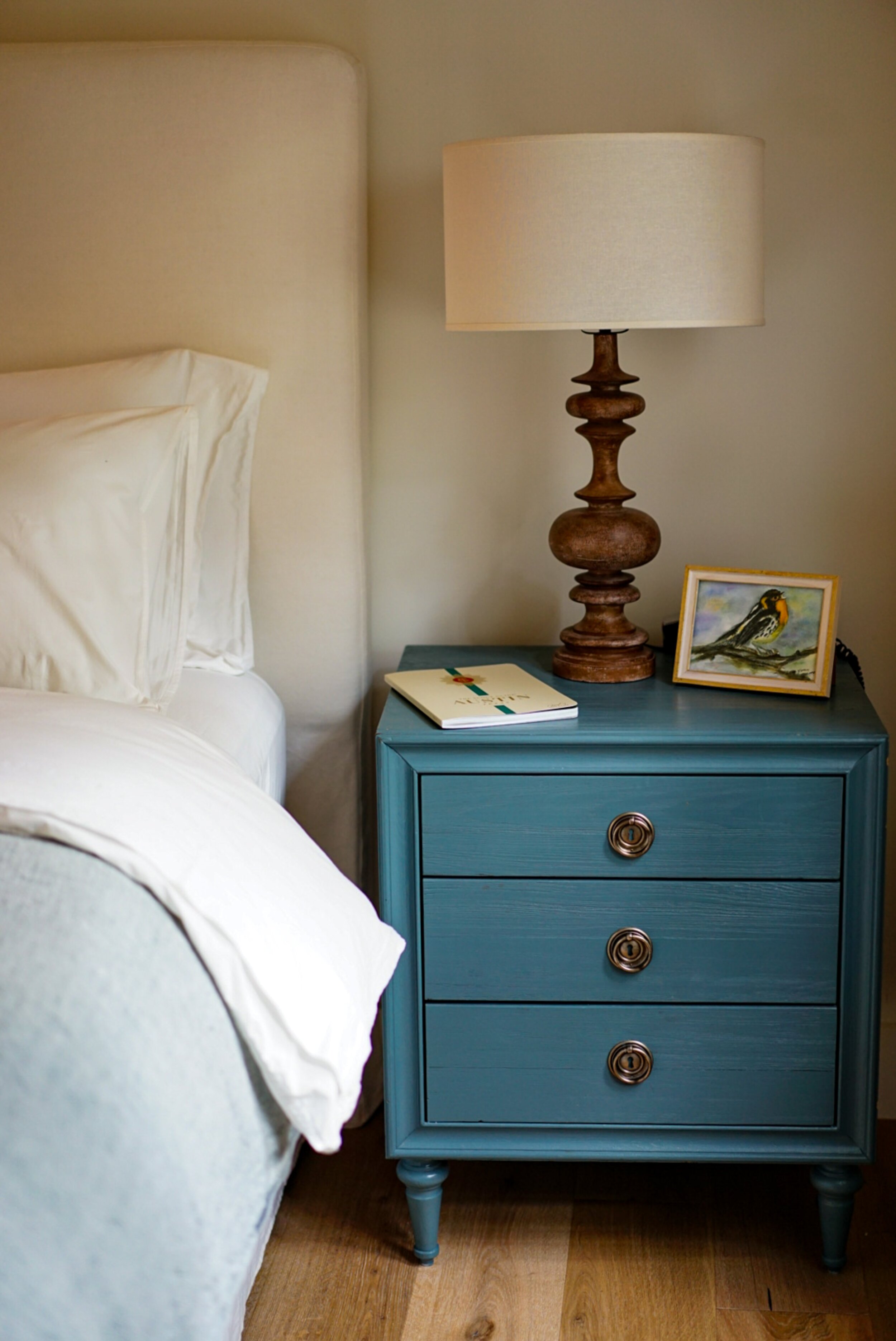I’ve heard that you’re supposed to have two nightstands. Is this always necessary? Is it ok to just have one?
In general for adults, it’s helpful two have two nightstands, one on each side of the bed. They don’t have to match, but ideally, they should be similar in size. In a mundane way, this creates more balance between you and your partner. If you’re single, it creates space to invite in a partner.
A lot of people who are single may only have one nightstand because they don’t currently need a second one. However, it’s helpful to actually create the space for the partner you do want to invite by accommodating them even before they arrive in your life. You can do this by having a nightstand for them. The same goes for pillows as well—you may only need one pillow at the moment, but by creating your bedroom as if you’re already in a partnership, you’re making your space more inviting, both energetically and physically, to your future partner.
You might also be in a situation where you are not looking for a relationship. If you’re really working on cultivating yourself and you intentionally don’t want to make space for someone right now, that’s completely ok and admirable. If you don’t want a partner, that’s your decision to make.
However, I wouldn’t recommend having only one nightstand long-term. Not only do nightstands represent you and your current or future partner, they can also represent the masculine and feminine sides of yourself. Regardless of whether we have a partner or not, there’s a duality within us that we’re always working to balance: feminine and masculine, light and dark, yin and yang. Over time, having only one nightstand may create an imbalance in these two sides of yourself.
I hope that helps! If you have more questions about your specific situation, I encourage you to work with a consultant or join an upcoming Practical Feng Shui workshop!
Thanks for reading our "Q&A Sunday". If you have personal questions, we encourage you to check out Practical Feng Shui or hire one of Anjie's Grads.
If you’d like to learn more about feng shui, check out Mindful Design Feng Shui School at: www.mindfuldesignschool.com





